Gwyneth Harold Davidson's Blog, page 5
September 17, 2020
Intergenerational Strength
Recently, I have been doing research about dog pedigrees and also bloodlines of horses for my general interest, I am not and will not be getting into breeding animals. Being immersed in this has perhaps turned my mind to the current Parliamentarians, so forgive me if this information struck me.
These connections can be lessons in leadership and how to build intergenerational strength. Remember that old time religion told us more than one time that acts of parents can affect up to the fourth generation, both to help and also to hurt. I have no difficulty with the connections set out below, let them be a lesson to all who read them of the impact of habits and associations.
So here are a few of my observations about Parliamentarians in Jamaica sworn in Tuesday, September 15, 2020. I wish them the greatest success in advancing the welfare of Jamaica and the whole human race.
President of the Senate Hon Tom Tavares Finson, nephew of former minister of Housing Hon DC Tavares Jr MP who was on the team that wrote the 1962 constitution of Jamaica. His father, DC Tavares Snr was a real estate businessman who co founded Tavares & Finson.
Senator Senator Sherene Golding Campbell is the granddaughter of former Speaker of the House Tacius Golding MP, and his wife, the founding Principal of Old Harbour High School Mrs Enid Golding nee Bent. Senator Golding Campbell is the daughter of former Prime Minister Bruce Golding and daughter of businesswoman and creator of the ubiquitous Jamaican cheese bread Mrs Lorna Golding nee Charles. Senator Golding Campbell is a niece of former Speaker of the House Pearnel Charles Snr MP and cousin to Dr Michelle Charles MP and the Hon Pearnel Charles Jr MP.
Hon Pearnel Charles MP and Dr Michelle Charles MP are children of the immediate past Speaker of the House Pearnel Charles MP.
Senator Charles Sinclair Jr is a former Mayor of Mo Bay and also son of the fomer Mayor of Mo Bay Charles Sinclair Snr.
Mr Mark Golding MP is the son of lauded medical pioneer Sir John Golding.
Mr Julian Jay Robinson MP, is the son of jurist in the International Court of Justice, Patrick Robinson. He is also the nephew of former Member of Parliament Helen Robinson who famously declared that she was not going be associated with criminals saying, "me nah hug up no gunman".
Min of State in Finance Atty-at-Law Marsha Smith MP, is the daughter of former MP and Atty-at-Law Ernie Smith.
Hon Daryl Vaz MP, son of Mr Douglas Vaz MP and fashion designer Soni Vaz
Mrs Ann-Marie Vaz wife of Daryl Vaz
Dr the Hon Peter Phillips MP, is a son of former Principal of Moneague College Aubrey Phillips CD and author of the book 'Adolescence in Jamaica" nd there is an annual lecture in his name. Dr Phillips is also a nephew of former Chief Justice of Jamaica Sir Rowland Phillips.
Mr Mikael Phillips MP, is a son of Dr Peter Phillips MP and pioneering Rastafarian ital restaurateur Sister Minnie Phillips.
Senator the Hon Kamina Johnson Smith daughter of historian, writer and Ambassador HE Anthony Johnson.
Dr the Hon Nigel Clarke MP, son of the former Supreme Court Justice Neville Clarke and nephew of former Minister of Government and leading cocoa agro-producer Claude Clarke MP. Dr the Hon Nigel Clarke's maternal grandfather Harold Percival Gibson was an executive in the Jamaica Agricultural
Society and the Citrus Growers Association.
Mr James Roberton, son of esteemed maritime pioneer Mr Ismael Robertson CD.
Most Hon Andrew Holness, protégé of Most Hon Edward Seaga
Mrs Juliet Holness, wife of Andrew Holness
Hon Olivia Grange, protégé of the Most Hon Edward Seaga
Hon Desmond McKenzie, protégé of Most Hon Edward Seaga
Not The End
Success to All
September 4, 2020
August 31, 2020
Vibration from Palampalam - A Young Man Makes Life In Jamaica
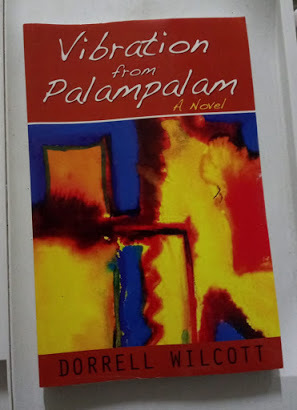 The beauty of an allegorical story is that it is open to interpretation, you fill in the blanks or undo the mysticism to get to the real point of the story.
The beauty of an allegorical story is that it is open to interpretation, you fill in the blanks or undo the mysticism to get to the real point of the story. The Vibration from Palampalam A Novel by Dorrel Wilcott published by Arawak publications in 2012, leaves me with the impression that although this book is not an allegory, the author is deliberately misleading by skipping over much that should be important to the story and expending energy on smaller things.
The book tells the story in the fine old way describing a version of the life arc of the protagonist, and gives us information on his ancestors and also his progeny. It would seem therefore, that the modest 142 pages would give us a good grounding of the character, but there is still so much more that was not told. It was not a written as a hagiography, as the failings of the character are set out, but it feels like an incomplete memoir of a man.
The foreword by Patrick Bryan is helpful in explaining the hero Dalphus Congonza when he says, "First, his ambition is to throw off the scars and the negative features of that childhood, and to succeed in spite of them. Second, and in contraction, some of the values that he disdains and which contributed to the disfunctionality of his family became a part of his own value system."
The novel is not preoccupied with race and colour. However, they both have an enormous inflience in shaping the lives of people and contributing to the dysfunction within the Dalphus' family," Bryan says, this should have really read the Congoza family.
Dalphus grew up with minimal education in Palampalam iwhich was supposed to be a frightfully haunted woodland within the community of Service. He was the only child in a family where there was no love. Even though Dalphus hurt his mother early on, it was a reaction to the "who had seen everything that she disliked about her husband in that little boy".
The natural environment of rural Jamaica is integrated into the book from beginning to end. Dense woodland had to be cleared to build both the home that he grew up in, and a rocky hilltop had to be cut to build the prominent home that he made for himself. The woodland was the scene that led to the death of his friend and deepest grief. Dalphus also made his living from farming the land, and a lot of it was rocky hillside, but he did it successfully and managed to pass down the love of farming to one of his sons.
Relationships between the character and the women in his life are complicated, chief among these women are his mother, wife, lover and elder daughter. He knows that he is not excelling in the relationships, but he seems as if he is helpless in how to improve them and relies on his good friend Gus to play the role of conciliator and way-maker.
When he was just about out of his teens, a woman, Primela admires him in the club and "he declined, almost becoming flustered", then "he looked at her again. The chemistry or whatever they used to call it mixed furiously." Later, he leaves Primela for Emma and their relationship is described as a financial arrangement, "Dalphus had hitched a fee simple in Emma's financial empire."
Later, his mother-in-law is banned from his home for her cattiness and his eldest daughter, the apple of his eye, disappoints when she does not marry as he wants.
Dalphus' relationships with men seem steady and true and valuable, aside from Bandy-Leg who tried to take sexual advantage of him as a naive teenager. Gus became a lifelong confidante, and wise counsellor for both himself and his wife, the beautiful, educated and unworldly Odagled who defied her family to marry him.
As a businessman, Dalphus understands and is not held down by the prejudices that were against him. This included established religion, the police force, financial institutions and even his neighbours at Rico's Bar. He rises above those challenging situations and masters them. He also, somehow, becomes reconciled with his father, but did not with this mother.
Here we arrive at the rock bottom of all of the story of Dalphus: the lack of a loving relationship with his mother Tantal, that experience, left him, he accepted, stone dead to sensitivity in family and intimate relationships. By the end of the book, however, he is grateful to have shared loving moments with his wife and to have experienced love with his children. His children, however, were not a united family, each one deciding to be set against the ways of the others. Dalphus did nothing to heal the rift between the siblings, and participated in it by making it obvious that Daphnie was his "chosen one".
The choice of matters the Wilcott chose to spend his time on were diverse. He set out the matters around the death of Gus in excruciating detail, yet the three marriages in the book were glossed over, or became commentaries on society in general. Additionally, reverence was paid to the very existence of Marcus Garvey who influenced Dalphus' father's thinking and actions. He lets us know that Dalphus is distressed that descendants of Africans enslaved in the Americas had not built on the successes of the Haitian revolution.
It is a theory of mine that stories of relationships with the protagonist and his or her mother defines many contemporary books by Jamaicans. This book fits into that category. In this book, the crime of Tantal was just that she existed and married Ciezo Congoza, a man who neglected her for more stimulating company, and also beat her if he felt threatened by her arguments. Tantal married a dark skinned follower of the teachings of Marcus Garvey, she was a light skinned Jamaican who was the child of a light skinned, snobbish woman.
Dalphus was the victim of his mother's frustration about her husband and she also inculcated prejudices in him, nurturing behaviour that would suggest that he was better than and different from the other children in Service.
Many ideas are not fully set out in the story leaving them open to interpret the true weight that they have on the protagonist, or not. Readers will find it interesting to meander with Dalphus through his life in a Jamaica of once upon a time, but perhaps, still here with us.
END
More discussion on mothers in books by Jamaicans
`
August 25, 2020
Published in The Jamaica Observer literary magazine "Boo...
Published in The Jamaica Observer literary magazine "Bookends" in August 2018
Down The Rabbit Hole We Go
“Alice is about a girl being her own hero,” the 16 year-old said on the journey between May Pen and Kingston. We were having a literary discussion which included the original novel, Alice's Adventures in Wonderland and my memory threw up the memoir, The Wonderful Adventures of Mrs Seacole in Many Lands.
Both books are about an unaccompanied female going through challenging situations; both have the words "Wonder" and "Adventure" and “Land” in the title, and the books were published eight years apart. Seacole’s memoir was published in 1857, eight years before the novel in 1865. Could Carroll have been influenced by Jamaica's Mary Seacole when he created Alice? I did a split screen to compare the two books, and found similar scenes and themes.
Alice voluntarily goes down a rabbit hole without regard for personal safety, following her thirst for adventure and in pursuit of the White Rabbit, a rabbit is the lure in greyhound racing and also hounding. Mary Seacole left Jamaica, following her lure, money, which was forever elusive to her, but more important to her was her thirst for adventure and the thrill of testing her will against a world where the deck was stacked against success for a single Black woman.
Alice encountered systemic prejudice against her in Wonderland, then one by one she wins over the characters to become allies: the White Rabbit, kept mistaking her for his servant MARY-Ann, the caterpillar who spoke to her contemptuously, the duchess who was dismissive on their first meeting and the Hatter, March Hare and Dormouse at the tea party. Seacole wrote about racial and gender prejudice, whether against her or other persons, and how she got around it. Alice's encounters in Wonderland are mostly with male characters, notable exceptions being the duchess and the queen; akin to Seacole, whose adventures happen in the company of men.
Alice cries a sea of tears and swims in it with several animal characters: Seacole made journeys across the Caribbean Sea the Atlantic Ocean through Asia Minor to the Black Sea, pleased to interact with persons of different nationalities and ethnicities and accepting good and bad fortune as they came.
Alice carelessly drinks and eats mysterious substances that result in spectacular body changes: Seacole was renown for her preparations that healed victims of deadly diseases. Alice is illustrated wearing a pinafore, but had not been doing work when her adventure started. Could this be a reference to Seacole’s work as doctress and restaurateur, which required her to wear an apron every day?
Seacole extended herself too much to be successful in business, but always turned her situation around through hard work, friendships and alliances. Alice acquires nothing in Wonderland except experiences with memorable characters, none of whom advance her mission of getting home: pompous birds, haughty caterpillar, queer Cheshire Cat.
Alice's encounter with the duchess and the lunatic tea party fringe, I think, are allegories for the Crimean War which eventually brought Seacole into international prominence. The duchess is unfriendly to Alice, and thrusts her baby on her and sits in a kitchen where her cook is overusing black pepper. Perhaps this represents Florence Nightingale who respectfully received Seacole, but who is focused on giving care. Black pepper in the kitchen could be gunpowder and general munitions. Seacole becomes a hostess in the Crimea: Alice becomes a hostess at the tea party, a confusing affair which I suggest represents the chaos and confusion of war.
The trial of the knave in Carroll's book who was accused of the crime of stealing the queen's tarts is Seacole's return to society as a pauper from the Crimea. Tarts made with black pepper are special to the queen. Could these special black pepper tarts be a connection to the West Indies, the sweet source of British wealth built by Black labour?
After her memoir was published, Seacole’s care for British soldiers during the Crimean war was celebrated by citizens and royalty: In the final chapter of the novel, Alice grows taller than everyone else in the courtroom, including the queen and the king. She is tremendous, but they are revealed to be nothing more substantial than a deck of playing cards and then fallen leaves.
In my view, there is more than a passing similarity between the date of the publishing of the memoir and the first Alice book. The place of the family of ten-year old Alice Lidell in Carroll’s affections is secure, but which other single, unconnected, non-courtesan, proper, and determined woman could have influenced the creation of the fictional Alice, but Mary Seacole?
Do consider these things before you give the thumb down, "Off with her head!"
-30-
Published in The Jamaica Observer literary magazine...
Published in The Jamaica Observer literary magazine "Bookends" in August 2018
Down The Rabbit Hole We Go
“Alice is about a girl being her own hero,” the 16 year-old said on the journey between May Pen and Kingston. We were having a literary discussion which included the original novel, Alice's Adventures in Wonderland and my memory threw up the memoir, The Wonderful Adventures of Mrs Seacole in Many Lands.
Both books are about an unaccompanied female going through challenging situations; both have the words "Wonder" and "Adventure" and “Land” in the title, and the books were published eight years apart. Seacole’s memoir was published in 1857, eight years before the novel in 1865. Could Carroll have been influenced by Jamaica's Mary Seacole when he created Alice? I did a split screen to compare the two books, and found similar scenes and themes.
Alice voluntarily goes down a rabbit hole without regard for personal safety, following her thirst for adventure and in pursuit of the White Rabbit, a rabbit is the lure in greyhound racing and also hounding. Mary Seacole left Jamaica, following her lure, money, which was forever elusive to her, but more important to her was her thirst for adventure and the thrill of testing her will against a world where the deck was stacked against success for a single Black woman.
Alice encountered systemic prejudice against her in Wonderland, then one by one she wins over the characters to become allies: the White Rabbit, kept mistaking her for his servant MARY-Ann, the caterpillar who spoke to her contemptuously, the duchess who was dismissive on their first meeting and the Hatter, March Hare and Dormouse at the tea party. Seacole wrote about racial and gender prejudice, whether against her or other persons, and how she got around it. Alice's encounters in Wonderland are mostly with male characters, notable exceptions being the duchess and the queen; akin to Seacole, whose adventures happen in the company of men.
Alice cries a sea of tears and swims in it with several animal characters: Seacole made journeys across the Caribbean Sea the Atlantic Ocean through Asia Minor to the Black Sea, pleased to interact with persons of different nationalities and ethnicities and accepting good and bad fortune as they came.
Alice carelessly drinks and eats mysterious substances that result in spectacular body changes: Seacole was renown for her preparations that healed victims of deadly diseases. Alice is illustrated wearing a pinafore, but had not been doing work when her adventure started. Could this be a reference to Seacole’s work as doctress and restaurateur, which required her to wear an apron every day?
Seacole extended herself too much to be successful in business, but always turned her situation around through hard work, friendships and alliances. Alice acquires nothing in Wonderland except experiences with memorable characters, none of whom advance her mission of getting home: pompous birds, haughty caterpillar, queer Cheshire Cat.
Alice's encounter with the duchess and the lunatic tea party fringe, I think, are allegories for the Crimean War which eventually brought Seacole into international prominence. The duchess is unfriendly to Alice, and thrusts her baby on her and sits in a kitchen where her cook is overusing black pepper. Perhaps this represents Florence Nightingale who respectfully received Seacole, but who is focused on giving care. Black pepper in the kitchen could be gunpowder and general munitions. Seacole becomes a hostess in the Crimea: Alice becomes a hostess at the tea party, a confusing affair which I suggest represents the chaos and confusion of war.
The trial of the knave in Carroll's book who was accused of the crime of stealing the queen's tarts is Seacole's return to society as a pauper from the Crimea. Tarts made with black pepper are special to the queen. Could these special black pepper tarts be a connection to the West Indies, the sweet source of British wealth built by Black labour?
After her memoir was published, Seacole’s care for British soldiers during the Crimean war was celebrated by citizens and royalty: In the final chapter of the novel, Alice grows taller than everyone else in the courtroom, including the queen and the king. She is tremendous, but they are revealed to be nothing more substantial than a deck of playing cards and then fallen leaves.
In my view, there is more than a passing similarity between the date of the publishing of the memoir and the first Alice book. The place of the family of ten-year old Alice Lidell in Carroll’s affections is secure, but which other single, unconnected, non-courtesan, proper, and determined woman could have influenced the creation of the fictional Alice, but Mary Seacole?
Do consider these things before you give the thumb down, "Off with her head!"
-30-
August 20, 2020
Four Novels of Summer - Jamaica
My four novels of Summer 2020 again followed my trend of reading books that were written by Caribbean authors and that are set in the Caribbean and are suitable for YA and also adult readers. The selections were through the Jamaica Library Service and I enjoyed them all in different ways. My secret to enjoying a book is to get in synch with the writer's own style of storytelling, and the core reason for telling the story at all.
If I were to recommend any or all of these books, it is that it is good over evil, self forgiveness and the huge potential of the human spirit to guide lives in big and small ways.
This cluster were all authored by women: three Jamaicans and one writer from Antigua and Barbuda. All settings are contemporary, which I am placing from the 1990s to the present and the books were published between 2013 and 2019, making them very recent publications. All three books are set in the major city of the region. Kingston, Montego Bay and the capital of Antigua, St John.
These are the books:
Musical Youth (2013) by Joanne Hillhouse
A shy, insecure, young teen develops her confidence and builds true friendships through a youth musical programme with youngsters her age. Through preparations for the final production, she unearths her own family story and has to confront all that it presents. The story integrates the music of the islands and also global pop music in the world of the young people.
Lest We Find Gold (2019) by Melanie Schwapp
A woman suffers disappointment in her marriage, but this is directly related to what she learned about man and woman affairs as a child.I have placed this on my domestic violence and Jamaican mothers shelves because of the ongoing themes that are presented in the books that I read.
This book is firmly set in Kingston 6, Jamaica with nostalgic touches on deep rural Jamaica, it also has delicious episodes of food preparation with local ingredients.
Based on the forward and afterward notes, this book connected very closely to the personal life of the author.
Inner City Girl: Other Rivers To Cross (2018) by Colleen Smith Dennis
This is the ongoing story of a young woman who has now completed secondary school and has ambitions to start university. Despite having overcome disadvantages of being born and raised in a deep urban area to a struggling single mother, through fate, she has returns.
The author plunges the story back in a rough environment of poverty and shows us the pitfalls and the meagre opportunities that must be seized upon as any hope to advance in life.\
The bonds of fast friends, both old and new, and flimsy family more interested in maintaining social standing than family love and care.
The role of the older woman and the reformed man are carefully explored and Kingston city from the waterfront to the hills is the stage.
Tangled Chords (2014) by Brenda Barrett
An energetic episode in the lives of two young people from Montego Bay whose lives have been intertwined since childhood friendship and now, they realise that it has matured to adult love.
The complex nature of power dynamics within families, which extends to domestic employees and also wealthy cliques are explored.
Barrett pays homage to the music of Bob Marley in the hero's band and his mental resilience.
Over time, I have found over time themes that are very popular to Jamaican, and perhaps Caribbean writers, and these books do fit into what I have come to expect and easily find in the set-up of the novel.
The primary one, of course is the role of the mother. In three of these books, the books start with the mothers having already died, and we are let to know that they were flawed, especially in the area of setting a good example for their daughters. Yes, the protagonists are all young women.
The bad examples set by the mothers are based on their sexual behaviour and inability to be a good provider for themselves and their families. So who picks up the slack for these mothers? Of those three books, it is family members who live in deep rural areas or the family helper.
In the one book where there is a good mother, she is hands-off in child rearing, being more excited and focused on her professional achievements and successful marriage.
Turning to the father figure: in three of these books, the fathers were prevented by the mothers from being a part of their children's earl lives, which definitely had a negative effect on the entire home situation.
These comments, are now a trope for Jamaican literature, which makes me wonder what it says about the society talking to itself through writers. I do wonder how the subject matter in novels is very different from the popular music that we hear, but have rationalised this down to the gatekeeping. Many of these novelists are self published and self promoted, while the music is produced through a commercial process which is predefined by attributes, the popular ones being: Songs to mother, songs for sexy women, songs for gyallis, love songs for Jamaica, songs of divine adoration.
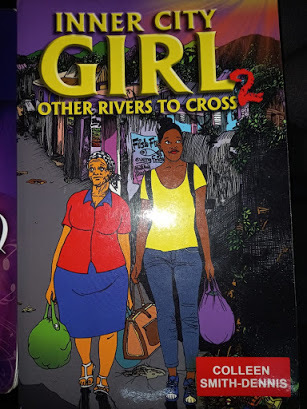
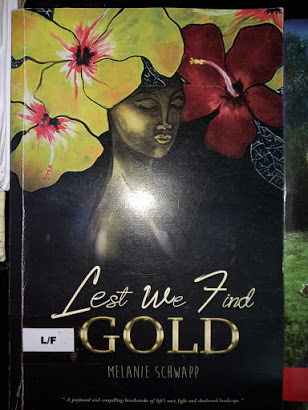
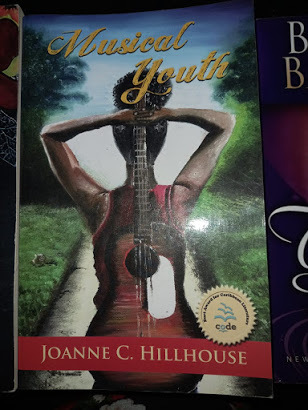
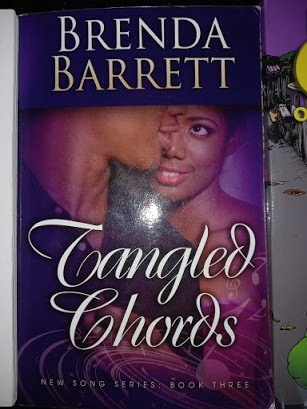
July 31, 2020
A Manuscript - The Amazing Adventures of Maude, a Jamaican Grandmother
Everybody has somebody in their family who surprises with what they have found to make themselves take up more good space than they knew they could.
Read the manuscript at the link below:https://issuu.com/gwyneth_h/docs/the_amazing_adventures_of_grandma_maude_july_31_20


July 30, 2020
Component of a Knowledge Society
Security is the primary reason why we live in communities. I do not wish to discuss security, but to present the idea that for security to be assured, communication needs to happen within the group so that everyone who has a role can be prepared to do it.
In the public sector, this translates to effective communication between agencies and also between the state and its publics. During emergencies and national events this communication is more visible, but it happens every day. At a strategic level, this communication would be led by specialised government bodies guiding policies and actions for the subject areas for which they command.
For clarity, this is what I am saying: for legal matters, the opinion of the Office of the Attorney General is sought; for environmental matters, the National Planning and Environment Agency has to put in a word; for citizenship issues, the Passport, Immigration and Citizenship Agency along with the Ministry of Foreign Affairs and Foreign Trade lay out the facts and provide a way forward.
The public sector cannot be an equivalent to the private sector as each ministry is an essential operation that strengthens the whole under direction of Cabinet and also under the oversight of Parliamentary Commissions.
Notwithstanding the excellent quality of products that are currently delivered by the public sector communications agency, the agency does not provide executive level services for its subject area of public sector communication. If such support were to be tabulated, it would begin with the actual implantation of the existing 2015 GoJ Communication Policy and development of a strategic plan that will usher components of the policy, where relevant, as is done in other subject areas.
Specialist MDAs are supposed to provide whole of government executive support for major projects from the concept development stage, use networks to build alliances, provide expertise for the evaluation of bids, provide monitoring and quality assurance during project development and implementation and also participate in the evaluation and billing. Perfection is often not achieved, but that is the role of specialist institutions in major
projects. In addition to specialist bodies, government also relies on cross functional teams drawn from its MDAs to provide some oversight of executive level activities.
Communication practitioners in MDAS have a full slate of scheduled and seasonal work that is dedicated to the corporate plan of their entity, so undertaking major projects will require outside contractors whose work should be under adequate oversight by professionals with the required experience and skills. Many times, for large projects, these skills do not reside – in fullness – within these diverse bodies. To say it another way, in the field of communications, individual public sector MDAS does not generally have the specialist skills required to carry out large and complex projects, this is really not required for the regular functioning of the bod.
Aside from this, the public sector itself does not have a cadre of executive C Suite level practitioners to assist MDAs to develop, select and monitor major communication projects that are beyond the scope of the established scheduled activities.
Conceivably, the government executive agency for communication can shear away the more mundane activities and instead focus on high level substances that require analysis, deeper research, multi-sector collaboration and corporate governance, talent recruitment, development and protection.
The cost of communication tools has dramatically been reduced to the point where even low income persons can deliver a polished product from software that they got free or at a low cost. Training to undertake communication projects are available in Jamaica and or through certification on the Internet or through practice.
The NWA shed itself of construction and moved into quality assurance and implementation, In Agriculture, government plantations, factories and farms are no more; in Transportation, the national airline is extinct.
There are cost savings that can be made to enable the public sector communications agency to deliver higher level services to the government:
Accelerate the automaton for booking, distribution and billing processes for stock items;Eliminate content platforms that do not locomote towards the national development goals;Eliminate production of physical materialsReassign records and archives to the Institute of Jamaica or Jamaica Archives and Records as appropriateOutsource content production to agile creative houses and state-of-the-art suppliers.These savings can create a high performance unit of professionals whose experience and knowledge would make them the equivalent of Queens Councils, Major Generals, Professors, Licensed Public Accountants, Commissioners and Surgeons that are found at the apex of other disciplines.
If Jamaica is to be a knowledge society then the public sector has to exploit the value to be gained from the deployment, utilization and retention of knowledge professionals.
July 18, 2020
Caribbean Writer Webinar explores the past and the future July 18 and 19 2020
"Imagine your own future, or someone else will do it for you"

This weekend, the The University of the Virgin Islands is holding a two-day webinar on July 18 and July 19 to launch Volume 34 of its literary publication, The Caribbean Writer. It also held the space for the annual Virgin Island Literary Festival and is exploring the theme, Diasporic Rhythms: Interrogating the Past, Re-imagining the Future. Anchoring the event is Editor-In-Chief of The Caribbean Writer, Alscess Lewis-Brown.
Rhythms and the past came early in the programme in the form of calypso with a discussion on the
forthcoming book "God, The Press and Uriah Butler", which was discussed by its author and the first speaker for the event, Calypso King Hollis, "The Mighty Chalkdust" Liverpool. Tubal Uriah Butler was a spiritual, labour and political leader in Trinidad and Tobago who was a leader in many public issues between the 1930s and 1950s. Hollis sees that the mission of Butler is incomplete, and this book serves to open discussion about the man, his work and the role of media in bending the public view. It should be noted that the main highway in Trinidad is named after Butler and he holds the country's highest honour, the Trinity Cross.
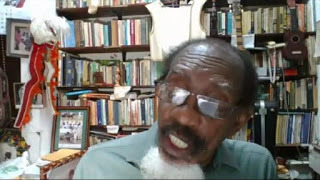 Calypso King Hollis "The Mighty Chalkdust" Liverpool
Calypso King Hollis "The Mighty Chalkdust" Liverpool(Trinidad and Tobago)The Speculative Fiction workshop featured writers Cadwell Turnbull whose most recognised work is the novel "The Lesson" and Tobias Buckell whose Halo novel was listed on NY Times Bestseller List for Paperback Trade.
This workshop was more a discussion between the two authors who interestingly spent parts of their young lives in the USVI and also fielding questions from the audience. When asked how they believed the Caribbean experience could fit into persistent themes in science fiction, both agreed that living on an island presented perspectives of living in the shadows of an empire, and also the immanent reality of alien invasions. Such invasions can be viewed from the past with the travel of middle American communities through the islands to the arrival of the Europeans and the peoples they introduced. For the present, then these invasions can be interpreted as tourism and expatriate workers.
They also insisted that works of science fiction was an an opportunity for Caribbean people to imagine a future of our own. Buckell said out a stark case when, while, when reading to a North American audience, a serious passage about islanders building a spacecraft he realized that the response was humour. He was hurt, and did not read that passage for many years until he was invited to the Caribbean to read. The response of the Barbadian audience to the same text was understanding and appreciation. Caribbean people have no difficulty imagining ourselves as world leaders in any space that we choose to occupy. For this, Turnbull and Buckell insist that if you do not imagine your own future, someone else will do it for you. Such imagining seems even more relevant now during the COVID-19 Pandemic.
 Cadwell Turnbull
Cadwell Turnbull
 Tobias Buckell Attendees were invited to visit a blog with a bibliography of Caribbean Science Fiction writers:
Tobias Buckell Attendees were invited to visit a blog with a bibliography of Caribbean Science Fiction writers:http://caribbeansf.com/
Canadian university lecturer born in South Africa, Rozena Maart, hosted the workshop on
Memoir Writing and what she calls Life Writing. In her guidance, Maart urged writers to place themselves at the centre of their stories, but to consider the writing process similar to that of peeling away layers of an onion to discover and to present "what is hidden, what is forbidden and what is repressed".
Maart also encouraged writers to deeply explore the language that they will employ to tell the story in the memoir. She notes that she gave privilege to the patois that she spoke at age eight in her first life story writing project. Maart herself grew up in a world where English and Afrikaans were the official languages.
Encouraging writers, Maart put forward the position that each individual inherits not only the physical traits and perhaps talents of ancestors, but also their dreams and that it should be among the pieces of evidence that a life writer must research.
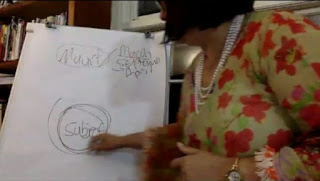 Rozena Maart insists that to write a memoir, self has to be at the centreInterspersed with the workshops, writers whose works have been published in The Caribbean Writer read their stories and poetry. Among them were poets Biko McMillan author of "Writing on Roots" (StCroix); Timothy Hodges (Anguilla); Andre Bagoo (Trinidad and Tobago); Corrine Binnins (Woodside, St Mary, Jamaica) and Joshua Nelson (India).
Rozena Maart insists that to write a memoir, self has to be at the centreInterspersed with the workshops, writers whose works have been published in The Caribbean Writer read their stories and poetry. Among them were poets Biko McMillan author of "Writing on Roots" (StCroix); Timothy Hodges (Anguilla); Andre Bagoo (Trinidad and Tobago); Corrine Binnins (Woodside, St Mary, Jamaica) and Joshua Nelson (India). Andre Bagoo
Andre Bagoo
 Corrine Binnins
Corrine Binnins Natalie Corthesy
Natalie Corthesy Timothy Hodge
Timothy Hodge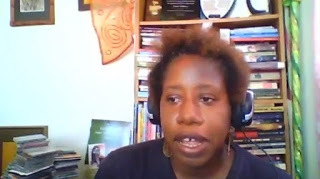 Joanne C Hillhouse
Joanne C HillhouseShort story writers and novelists included Natalie Corthesy (Jamaica); Mary Rykov (Canada originally from Puerto Rico); Joanne C Hillhouse "Musical Youth" (Antigua and Barbuda).
As segment host, writer and storyteller, Elaine Jacobs, complimented the organizers in the re-imagination of the annual Virgin Islands Literary Festival as a teleconference.
The featured speaker for the second day will be Caribbean storyteller Paul Keens Douglas (Trinidad and Tobago).
The poetry workshop will be led by Ana Portnoy (Puerto Rico) with writers from the USVI, Tiphanie Yanique "How to Escape from a Leper Colony: A Novella and Stories" and Richard Georges "Epipheneia".
Storyteller and blogger Ellie Hirsh will lead the workshop on Writing for Children.
View the full programme of the webinar at the link below.
Sunday's session is scheduled to start at 1PM, Jamaica time.
https://www.eventbrite.com/e/diasporic-rhythms-interrogating-the-past-re-imagining-the-future-tickets-110682775160
END
March 22, 2020
The Liturgy Speaks the Gospel

I attended a business event in Downtown Kingston one morning in late November, 2018.
A Minister of Religion stepped forward to offer the opening prayer as it is customary in Jamaica.
He did not offer a prayer. He went through a series of actions that put a smile on my lips because I recognised it as a scaled down version of the Morning Prayer liturgy that is driven by passages from The Bible.
The Morning Prayer tradition has scripture lessons assigned for each day of the year, and the readings of each day, taken together, provide a lesson. After a few years of following this practice, worshippers become familiar with the Old Testament and New Testament.
For example, the format for the Fouth Sunday in Lent which fell on March 22, 2018, the four readings covered hope provided by God's promise through Jesus.
1. Identification and anointing of a shepherd and youngest boy in a family to become the leader the nation needed;
2. The reading of the reassuring shepherd's psalm;
3. Apostle of Paul's letter to the church that they are no longer searching for salvation as Jesus, the light of the world, brought hope;
4. The parable of the Blind Man as the authoritative source that Jesus is the Light of the World.
The cleric that morning downtown, did not follow the liturgy of Morning Prayer strictly as he had been given five minutes, and this is how he used it. He said:
“Revelations reign upon the earth. Reading from the book of Revelations, chapter 5.
'Then one of the elders said to me, Do not weep! See, the Lion of the tribe of Judah, the Root of David, has triumphed. He is able to open the scroll and its seven seals'.
"Recently, I was walking on the streets and saw art on the roadside. It was the Jamaican flag, but a lion was carrying the Jamaican flag and my mind went back to a song that I know very well, I will teach you.
'The Lion of Judah shall break every chain,
The Lion of Judah shall break every chain,
The Lion of Judah shall break every chain,
He will give us the victory, again and again'.
“As we come together at this conference, think of the goal and think of the victory at the end. In scripture, the Lion of Judah was Jesus himself, he was slain on the cross, and became victorious and there was the resurrection after death. Have that picture this day as we say the National Pledge.
"Before God and all mankind, I pledge my heart, my mind my body in the service of my fellow citizens. I stand for justice and for peace. To work and think so that Jamaica may advance the welfare of the whole human race.
And that puts together why we are here today, Amen.”
In five minutes, the Reverend delivered an opening sentence, scripture reading, hymn, prophetic homily, intercession and benediction. The hopeful message was that the seminar will achieve its purpose.
The purpose of the seminar was to help development practitioners overcome social barriers and that the lifestyles of people living in depressed communities will dramatically improve and keep getting better.
The reverend himself is assigned to an extremely tough neighbourhood.
/ghd
March 23, 2020




